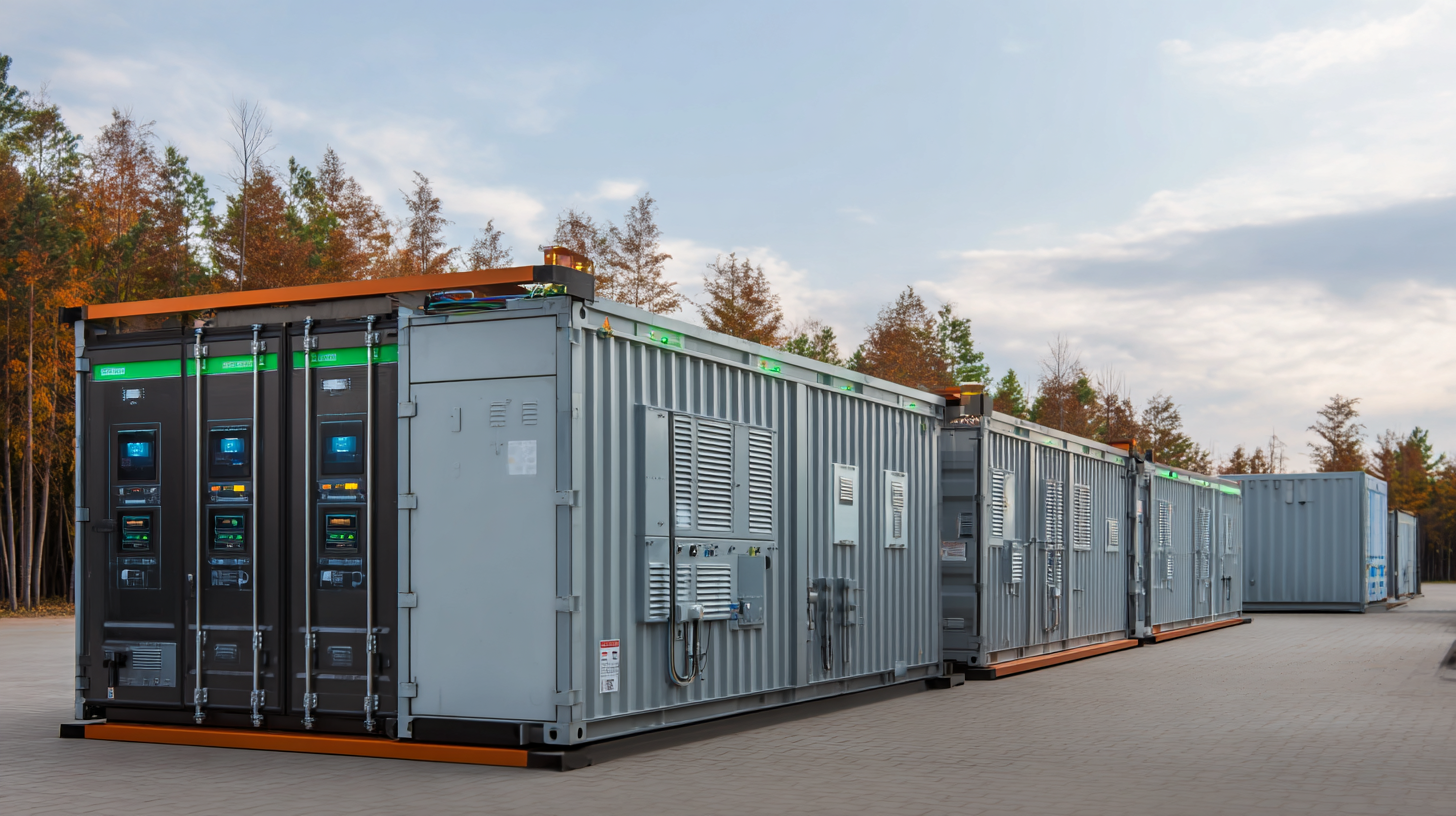Unlocking the Power of Best Power Storage Battery Specifications and How to Choose the Right One for Your Needs
As the demand for renewable energy solutions grows, the Power Storage Battery market is poised for unprecedented growth, projected to reach $200 billion by 2025, according to industry reports. The shift towards sustainable energy sources is driving innovations in battery technology, leading to more efficient, durable, and cost-effective power storage solutions. This blog aims to unlock the power of best power storage battery specifications and provide insights on how to choose the right one for your specific needs.

With advancements in lithium-ion, solid-state, and flow batteries, understanding the distinct features and benefits of each type is crucial for consumers and businesses alike. By carefully evaluating the performance metrics and applications of these batteries, users can harness their full potential while contributing to a greener future.
Understanding Key Specifications of Power Storage Batteries for 2025
As we look toward 2025, understanding the key specifications of power storage batteries becomes increasingly crucial for consumers and businesses alike. With the global stationary energy storage market expected to surge from $90.36 billion in 2024 to a staggering $231.06 billion by 2032, knowing how to choose the right battery is essential for maximizing efficiency and reliability.
Key specifications to consider include energy capacity, which determines how much energy a battery can store, and power rating, indicating how quickly that energy can be released. Efficiency is also vital, as it measures how much stored energy can be converted into usable power. Furthermore, lifespan and the number of charge-discharge cycles that a battery can handle are critical factors that influence long-term performance. By familiarizing yourself with these specifications, you can make informed decisions that align with your specific energy needs, whether for residential use or larger scale operations.
Unlocking the Power of Best Power Storage Battery Specifications
| Specification | Description | Importance for 2025 |
|---|---|---|
| Capacity (Ah) | Amount of electric charge a battery can store, measured in amp-hours. | Higher capacity allows for longer usage times between charges, crucial for high-demand applications. |
| Voltage (V) | Electrical potential difference measured in volts. | Influences power output; mismatched voltage can affect overall system performance. |
| Cycle Life | Number of complete charge-discharge cycles a battery can undergo before capacity drops significantly. | Longer cycle life reduces replacement frequency, enhancing sustainability and cost-effectiveness. |
| Efficiency (%) | Ratio of energy output to input, expressed as a percentage. | Higher efficiency means less energy loss, crucial as energy prices rise. |
| Temperature Range (°C) | Operational temperature range for the battery. | Wider range increases adaptability for various environments, vital for global applications. |
| Chemistry Type | Type of chemicals used in the battery (e.g., lithium-ion, lead-acid). | Different chemistries offer various performance characteristics; choosing the right one is key for efficiency and safety. |
Top Trends in Battery Technology and Their Impact on Energy Storage Solutions
As technology evolves, so do the specifications and capabilities of power storage batteries. One of the top trends in battery technology today is the advancement of lithium-ion batteries, which have seen significant improvements in energy density and lifespan.
 With ongoing research into solid-state batteries, we can expect even higher energy storage capacities and enhanced safety features. These innovations are setting new standards for various applications, ranging from electric vehicles to renewable energy solutions.
With ongoing research into solid-state batteries, we can expect even higher energy storage capacities and enhanced safety features. These innovations are setting new standards for various applications, ranging from electric vehicles to renewable energy solutions.
Another significant trend is the integration of smart technology into batteries. Modern batteries are now equipped with advanced monitoring systems that provide real-time data on charge levels, health status, and performance metrics. This data-centric approach not only helps users optimize their battery usage but also extends the lifespan of the battery by ensuring it operates within safe parameters. As these technologies become more mainstream, consumers can make informed decisions when selecting energy storage solutions tailored to their specific needs, paving the way for more efficient and sustainable energy consumption.
Essential Tips for Evaluating Power Storage Options Based on Your Unique Needs
When evaluating power storage options, it's crucial to consider your unique needs and application scenarios. The global energy storage market is experiencing rapid growth, with projections indicating that the market for battery storage alone will increase from a value of $32.63 billion in 2025 to $114.05 billion by 2032, marking a significant compound annual growth rate (CAGR) of around 20.3%. This fast-paced growth highlights the importance of identifying the right specifications that align with your energy consumption and sustainability goals.
Tips for Evaluation:
- Assess Your Energy Needs: Determine how much energy storage capacity you require based on your daily usage patterns. For instance, residential users may need a smaller system, while businesses might require larger setups.
- Consider Technology Type: Different battery technologies, such as lithium-ion vs. lead-acid, have varying efficiencies, lifespans, and costs. Analyzing these factors will help you choose the most suitable option for your specific application.
- Evaluate Future Trends: With the global renewable energy market projected to grow from $1,020.94 billion in 2024 to $1,574.17 billion by 2032, it’s essential to consider how your power storage choice fits into the larger context of sustainable energy initiatives and innovation.

Comparing Different Types of Power Storage Batteries: Which is Right for You?
When it comes to power storage batteries, choosing the right type can significantly impact your energy management strategy.
Lithium-ion batteries have gained immense popularity for their
high energy density, long cycle life, and lightweight design.
They are ideal for applications ranging from portable electronics to electric vehicles and renewable energy systems.
However, their higher cost may not suit everyone’s budget or needs, particularly for stationary storage solutions.
On the other hand, lead-acid batteries, including both flooded and sealed varieties, offer a more
budget-friendly option with established reliability. These batteries have a lower energy density
and shorter lifespan, making them ideal for applications where weight is less of a concern, such as backup power systems.
For specialized use cases, such as off-grid solar systems, exploring advanced options like
flow batteries may offer unique advantages due to their scalability and longer discharge times.
Ultimately, evaluating your specific power usage, budget, and application will guide you towards the best choice in
power storage batteries.
Navigating the Future: Where Power Storage Battery Technology is Headed by 2025
As we approach 2025, the power storage battery technology landscape is experiencing rapid evolution. The global alkaline battery market is anticipated to grow from $7.92 billion in 2025 to $10.18 billion by 2032, reflecting a steady compound annual growth rate (CAGR) of 3.66%. This growth indicates a robust demand for reliable power storage solutions, especially as industries pivot toward renewable energy sources and electric vehicles (EVs). The advancement in lithium-ion battery technology is poised to significantly shape this market, driven by decreasing material costs and an expanding application sphere across various sectors.
In tandem, the advanced storage systems market is projected to reach $4.23706 billion by 2034, representing an impressive CAGR of 8.18%. This surge underscores the increasing need for efficient energy storage methods to facilitate the growing reliance on renewable energy technologies. Countries like Thailand are emerging as key players in solar battery storage solutions, marking a substantial shift towards energy transformation in Southeast Asia. Companies that can innovate and adapt to these evolving market dynamics will play a crucial role in shaping the future of energy storage technology by 2025 and beyond.
